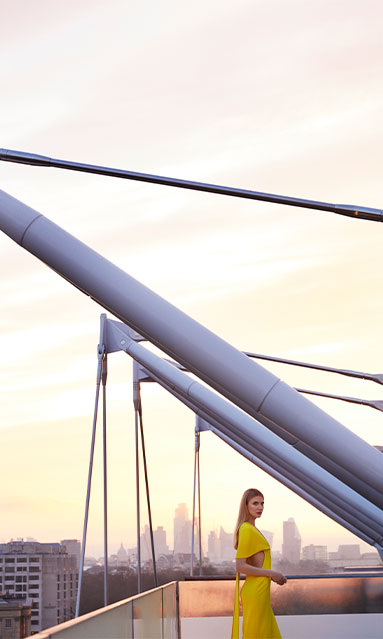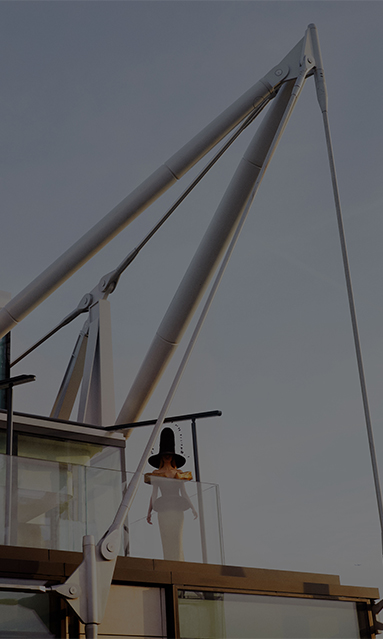
A Modern Masterpiece
An architectural triumph, Maybourne's modern masterpiece was nearly 20 years in the making, Deyan Sudjic discovers why The Emory is setting a new standard.
Seventeen years ago, Richard Rogers - one of the most influential architects of his generation - saw an extraordinary opportunity. In central London, the chance to design and build a new hotel of serious architectural quality is rare. The Emory would be his opportunity to design a tailor-made, all-suite hotel, with the potential to create a new London landmark.
This is a hotel whose architecture is soft-spoken, yet characterful. Rogers designed the building with his partner Ivan Harbour of RSHP as if it were an exceedingly well-cut Savile Row suit, to match Maybourne's bespoke approach to hospitality. Rogers and Harbour took care to create a building that, like a good neighbour, lives up to its surroundings but does not seek to dominate them.
A Modern Masterpiece
An architectural triumph, Maybourne's modern masterpiece was nearly 20 years in the making, Deyan Sudjic discovers why The Emory is setting a new standard.
Seventeen years ago, Richard Rogers - one of the most influential architects of his generation - saw an extraordinary opportunity. In central London, the chance to design and build a new hotel of serious architectural quality is rare. The Emory would be his opportunity to design a tailor-made, all-suite hotel, with the potential to create a new London landmark.
This is a hotel whose architecture is soft-spoken, yet characterful. Rogers designed the building with his partner Ivan Harbour of RSHP as if it were an exceedingly well-cut Savile Row suit, to match Maybourne's bespoke approach to hospitality. Rogers and Harbour took care to create a building that, like a good neighbour, lives up to its surroundings but does not seek to dominate them.
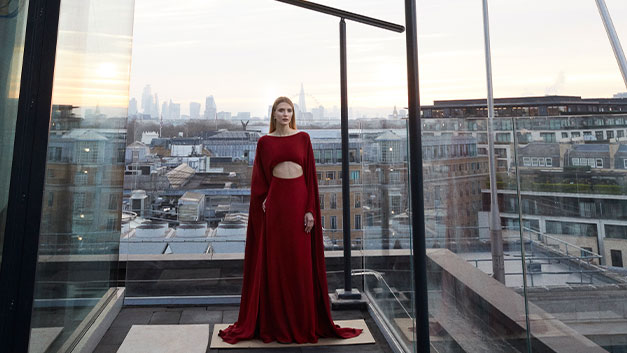
From the street, The Emory's colour palette is restrained: pale-coloured stone, bronze and white painted steel. But its proportions, the rhythmic pattern of the projecting balconies and the instantly recognisable silhouette of the steel masts and cables that carry the weight of the front of the building give The Emory distinctive character.
Rogers, who always wanted to find a good functional reason for his architectural decisions, used the complex demands of putting a building on a site bounded by a nearby underground railway tunnel to create a steel structure that projects from The Emory's roof. The jewellery like steel masts and cables emerging from the roof break up the skyline. They announce the hotel. But they are also working hard to carry the weight of the front of the building, and are designed to use just enough material to do the job they have to do, and more. Harbour describes it as 'having the precision of watchmaking.'
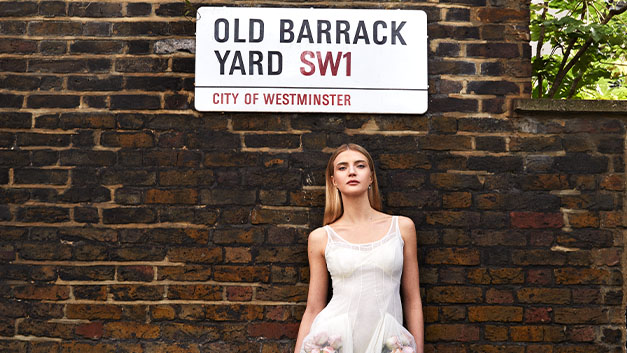
The engineering is remarkably elegant, but the bigger challenge for Harbour was to make a building that would be timeless in its appeal to its guests and as a presence in the landscape of central London, rather than a fleetingly fashionable sensation. According to Harbour, this is not a hotel defined by the passing trends of 2024: it is designed to last. The integrity of the central idea - the distinctive skeleton, the building frame- is rooted in basic, original thinking and will give it a unique timelessness.'
The Emory's immaculately detailed structure is discreet and understated, but unmistakably a modern take on building in one of London's most sensitive historic areas. The front door is all but invisible. Guests enter the hotel through an inconspicuous courtyard at the end of a private lane. To reach it, drivers must navigate Wilton Place, then swing onto Old Barrack Yard, a cobbled lane where, three centuries ago, the Grenadier Guards used to stable their horses.
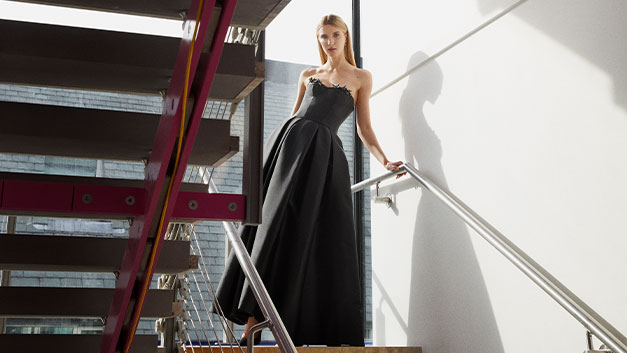
Once inside the hotel, guests discover that it is, by any measure, an exceptional site. On one side of The Emory, looking directly across Knightsbridge, is the sublime landscape of Hyde Park. This is a hotel designed to allow you to know where you are as you move in and around it. The central corridor has its own view looking toward Piccadilly. The stairs, finished in one of Rogers' trademark vivid colours - a shocking pink - are daylit too. It forms both a celebration of movement and a tribute to Rogers' himself.
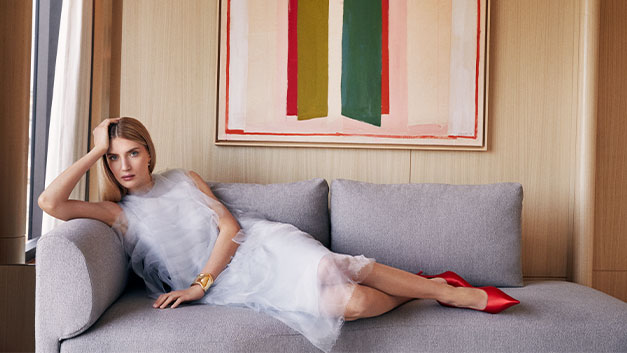
The suites have been conceived by a number of different international designers, all with backgrounds as diverse, cosmopolitan and distinctive as that of the hotel's guests. The penthouse, with expansive views on all sides, has been masterminded by London's Rigby & Rigby. Four international designers have each conceived two floors of bespoke suites, including Hong Kong-based André Fu. New York's Alexandra Champalimaud, the Milan-based Spanish designed Patricia Urquiola and Pierre-Yves Rochon from Paris. While their individual approaches to design are unique, all share an appreciation of what Fu once called 'relaxed luxury.' These are spaces that have personality and character without seeking to impose themselves.
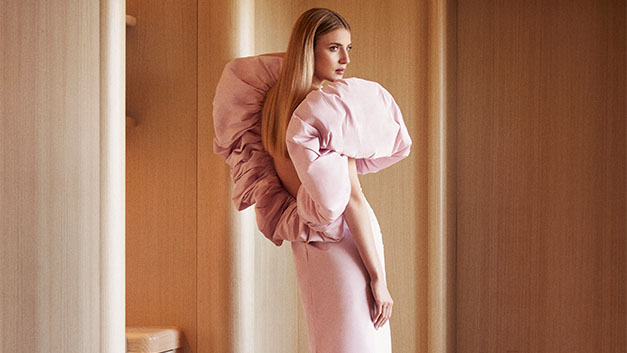
Each suite reflects a different aesthetic: some spaces are lined with warm timber like the inside of a cigar box: others use carefully crafted marble. There are libraries with thoughtfully chosen books on the shelves, and serious contemporary art on the walls. Every single suite has floor-to-ceiling windows- those on the Knightsbridge side of the building make them feel as if they are actually in Hyde Park, not just looking at it from across the street.
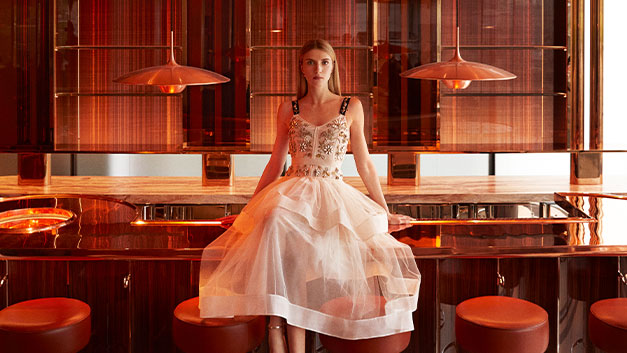
Beyond the comfort of the suites, there is much to enjoy, with Jean-Georges Vongeritchen's stunning ground-floor restaurant abc kitchens, designed by Rémi Tessier. The amber glass 'wine cave' is impressive, as are Damien Hirst's The Secret Garden Paintings - Tessier and Hirst are old friends.
The Emory's guests have the use of the hotel's spectacular rooftop, also designed by Tessier, all to themselves. There is The Emory Rooftop Bar for cocktails, with no set menu and each individual cocktail recorded for posterity. The Emory Cigar Merchants' which occupies a second glass pavilion, has a retractable roof for smokers for an unbeatable view of London's night sky.

Guests can expect the kind of thoughtful luxury that suggests the generosity of an attentive host, including airport transfers, use of a house car, a personalised bar and a dedicated Emory Assistant. It focuses on getting the details right, just like the architecture of the hotel.
Deyan Sudjic is the editor of Anima.
